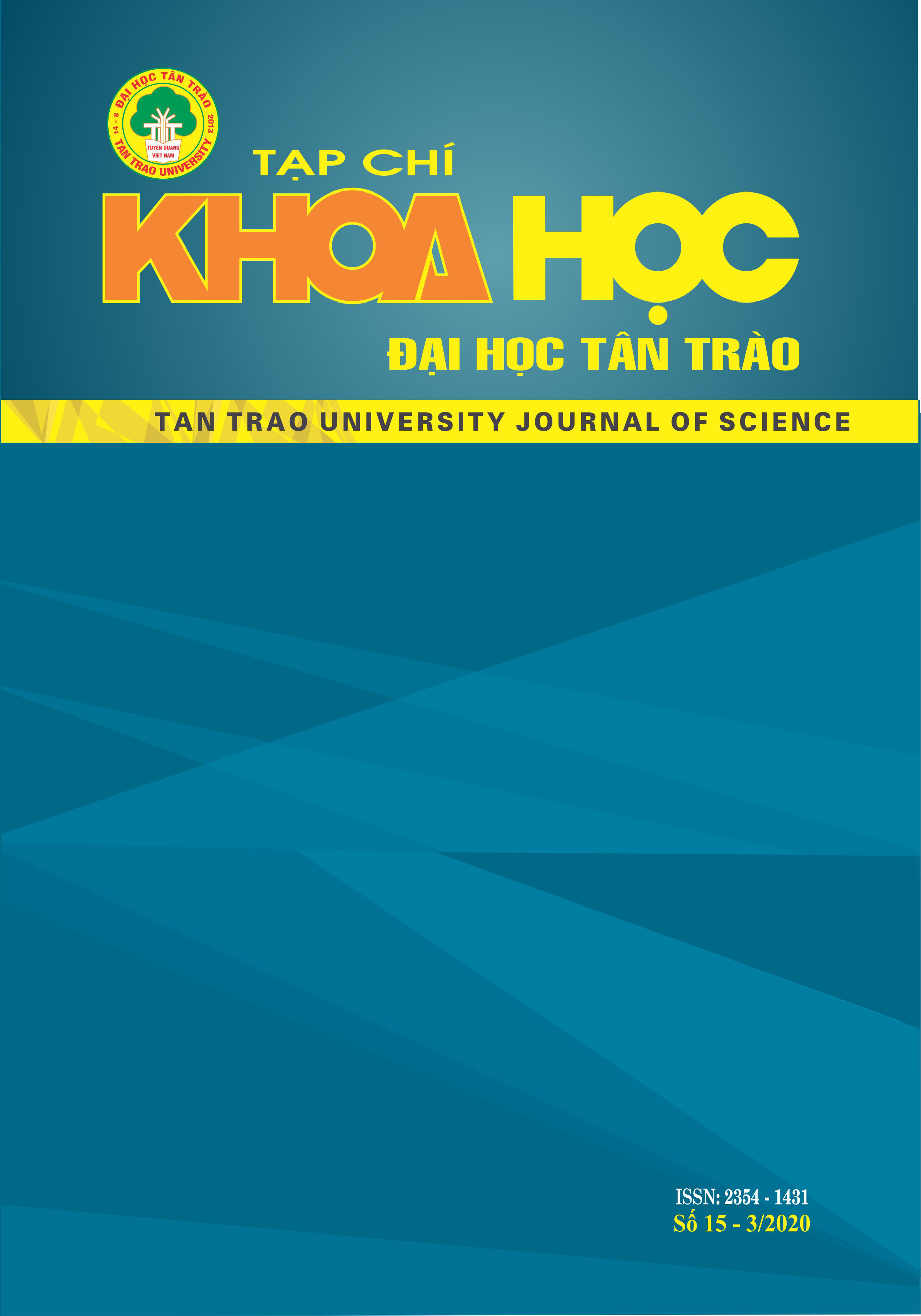Tiềm năng du lịch Lâm Bình-Tuyên Quang: di tích tiền, sơ sử và tôn giáo
DOI:
https://doi.org/10.51453/2354-1431/2019/271Keywords:
Tourism, Lam Binh, prehistoric relics, religionAbstract
Tuyen Quang is a land where people lived here from the Hoa Binh Neolithic cultural period with Phia Vai cave (Lam Binh), Chiem Hoa bronze drum and some vestiges of pre-Dong Son and Dong Son culture. It also has a famous religious relics like Phuc Lam Pagoda (Lam Binh) and many other temples. The author assessed the values of this monument in the general context of Vietnamese history.
The tourism exploitation in Lam Binh-Tuyen Quang has been done quite well. However, we care about strengths as natural landscapes or festivals of ethnic minorities. Meanwhile, the tourism segment is still disregarded. The author analyzes the current situation of this tourism segment and has some recommendations on the solution to develop “back to home” tours so that visitors can know the history of the land and people here.
Downloads
References
1. Bùi Vinh, Trình Năng Chung, Trịnh Văn Tĩnh (1995), Phát hiện đồ đá ở di chỉ Đầm Hồng (Tuyên Quang), trong sách: Những phát hiện mới về khảo cổ học năm 1995, Nxb. Khoa học Xã hội, Hà Nội, tr. 732.
2. Bùi Vinh, Trình Năng Chung, Đinh Thị Tường (1995), Về Sưu tập đá, gốm Bình Ca ở kho Bảo tàng Tuyên Quang, trong sách: Những phát hiện mới về khảo cổ học năm 1995, Nxb. Khoa học Xã hội, Hà Nội, tr. 76.
3. Quách Dũng (1989), Trống đồng Chiêm Hóa, trong sách: Những phát hiện mới về khảo cổ học năm 1989, Nxb. Khoa học Xã hội, Hà Nội, tr. 71.
4. Quốc sử quán triều Nguyễn (Bản dịch năm 2006), Đại Nam Nhất Thống chí, tập 4, Nxb. Thuận Hóa, Huế, 2006, tr. 389
Downloads
Published
How to Cite
Issue
Section
License

This work is licensed under a Creative Commons Attribution-ShareAlike 4.0 International License.
All articles published in SJTTU are licensed under a Creative Commons Attribution-ShareAlike 4.0 International (CC BY-SA) license. This means anyone is free to copy, transform, or redistribute articles for any lawful purpose in any medium, provided they give appropriate attribution to the original author(s) and SJTTU, link to the license, indicate if changes were made, and redistribute any derivative work under the same license.
Copyright on articles is retained by the respective author(s), without restrictions. A non-exclusive license is granted to SJTTU to publish the article and identify itself as its original publisher, along with the commercial right to include the article in a hardcopy issue for sale to libraries and individuals.
Although the conditions of the CC BY-SA license don't apply to authors (as the copyright holder of your article, you have no restrictions on your rights), by submitting to SJTTU, authors recognize the rights of readers, and must grant any third party the right to use their article to the extent provided by the license.





